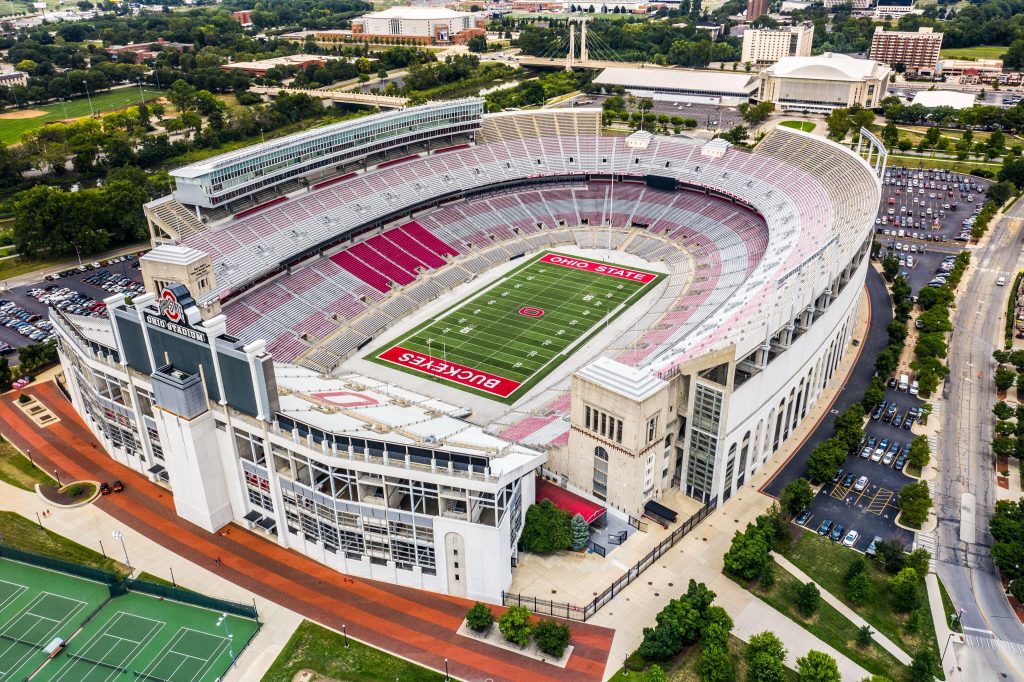


With an area of 808,359 sq. ft. and a capacity for 102,082 spectators, the Ohio Stadium is the third-largest stadium in the United States. Home to the Ohio State Buckeyes, the stadium was originally completed in 1922 with a major renovation done between 2000 and 2001. The nine-story building operates all year, hosting multiple sports games, concerts, and major events. As such, construction projects at the stadium have to be tightly coordinated and phased to limit disruption to operational activities.
As part of its long-term strategy to simplify its operations and maintenance and reduce its energy use intensity (EUI), water consumption, and GHG emissions, The Ohio State University (OSU) embarked on a multi-year project to transform its campus buildings, including the Ohio Stadium. The stadium relied on high-pressure steam supplied by a power plant to produce heating glycol and domestic hot water. Chilled water was produced locally with six chillers supplying chilled water to the facility, and 24 main ventilation systems and 144 fan coils were run 24/7 to serve different sections of the stadium.
In partnership with ENGIE, Ecosystem developed a holistic solution. Through a DHW steam to heating glycol conversion and by closing the steam network to serve the DHW heaters, the project will reduce the stadium’s EUI. A heat recovery chiller in place of the existing systems will improve the heating and chilled glycol network. The Air Handling Units and fan coils now operate on an occupancy schedule for added efficiency, and the LED lighting retrofit provides electrical savings.
Chilled glycol network improvement
Heating glycol network improvement
Heat recovery chiller
Demand control ventilation
Steam condensate heat recovery
Efficient DHW production – steam to heating glycol conversion
Concourse LED lighting retrofit
